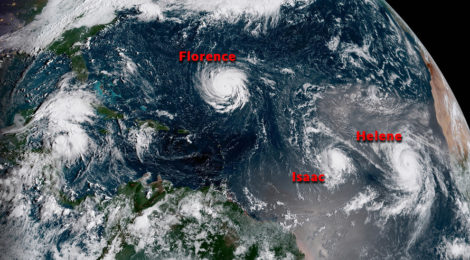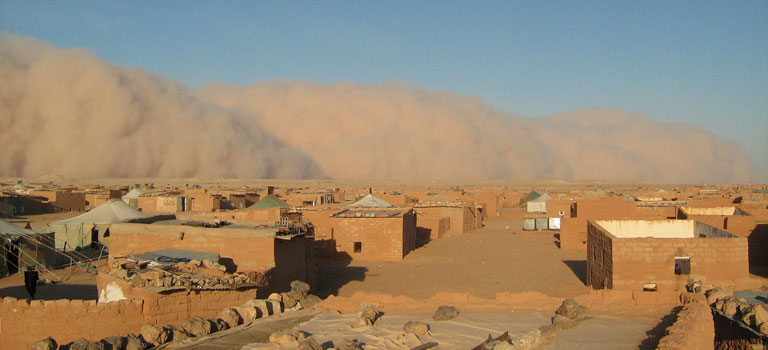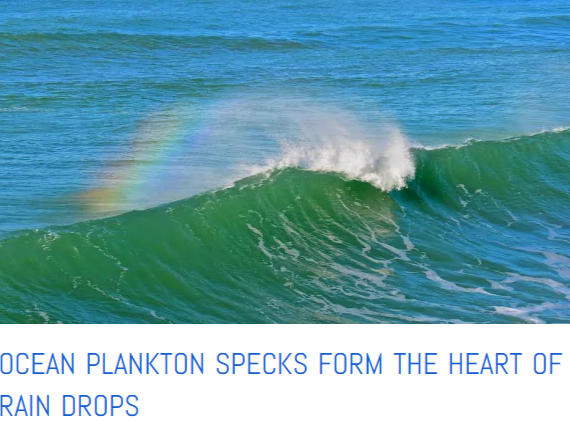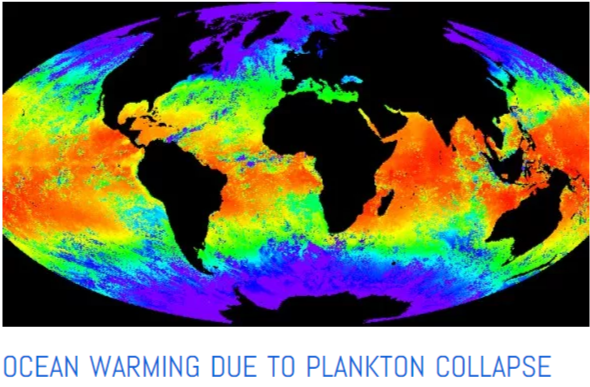
High Levels Of Saharan Dust Cools Off Atlantic Hurricanes
It’s Dusty In The North Atlantic
As a result, hurricanes are scarcer and weaker,
Present company, Florence, excepted
New scientific reports show the dust has cooled the ocean
In the modern news media where no story that can bear a dire headline is refused, scary dust from the Sahara has been a favourite this year. Texans proclaim that ‘bad Saharan dust’ is of course far worse than ‘good old Texas dust’. So with dust from the Sahara Desert in Africa—totaling a staggering 2 to 9 trillion pounds worldwide this year— it has produced, even in climate change denialist FOX news, reports of a biblical plague on Texas and much of the Southern United States this summer. But is there a silver lining to those brown clouds from Africa?
Headline photo from space shows a vast plume of brown African dust stretching across the Atlantic along with Hurricane Florence, Issac, and Helene marching across the Atlantic today.
According to recent scientific papers, the Saharan dust appears to be a potent hurricane killer.
Research from a team of scientists led by Texas A&M University has studied Saharan dust and their work is published in the current issue of the Journal of Climate of AMS (American Meteorological Society).
Texas A&M’s Bowen Pan, Tim Logan, and Renyi Zhang in the Department of Atmospheric Sciences analyzed recent NASA satellite images and computer models and said the Saharan dust is composed of minerals that are swept up in air currents and pushed over the Atlantic Ocean to the Gulf of Mexico and other nearby regions.
“Dust may decrease the sea surface temperature, leading to suppression of hurricanes. For the dust intrusion over the past few days, it was obvious that dust suppressed cloud formation in our area. Basically, we saw few cumulus clouds over the last few days. Dust particles reduce the radiation at the ground, but heats up in the atmosphere, both leading to more stable atmosphere. Such conditions are unfavorable for cloud formation.”
Zhang said that the chances of a hurricane forming tended to be much less and “our results show that dust may reduce the occurrence of hurricanes over the Gulf of Mexico region. The movement of the dust is there, but predictions of dust storms can be very challenging.”
As the dust-laden air moves across the Atlantic, it creates a variety of ocean cooling effects. This means fewer storms and even hurricanes are less likely to form and become large when the dust is present. What the authors avoid in this paper is reference to the other even more potent hurricane/ocean cooling effects of Saharan dust.

Major hurricanes are increasing as seen in 100+ years of records
Saharan dust feeds Amazon rainforest and ocean plankton pastures

Saharan dust, a powerful agent in keeping the climate cooler, is destined for a dramatic decline. Click to read more
The American Geophysical Union issued a statement recently (February 24, 2015) about dust lifted each year from the world’s largest desert, the Sahara, which lies across the northern third of Africa. The Sahara dust, a brown cloud in the air, stretches between these continents, and ties together the desert and the jungle. Scientists have been studying this process, and, as it turns out, Saharan dust feeds the Amazon rainforest just enough to replace nutrients that are washed away by the constant rain.
In an earlier study (2008) scientists reported on Saharan dust storms producing massive climate moderating effects in the Atlantic. The dust delivers vital nutrients and minerals common on land but scarce in the open ocean. These stimulate the production of massive plankton blooms. The blooms stimulate low-level marine cloud formation, which cools the ocean by reflecting the sun’s heating rays back into space.
Ocean life in dramatic decline

New Scientific Reports Add Proof That Tiny Bits Of Plankton Lofted Into The Air Create Clouds And Rain Drops – click to read more
Plant life in the oceans, the phytoplankton, has been reported to be in cataclysmic decline for at least 50 years based on real observations, not fuzzy climate models. The rate of phytoplankton/chlorophyll decline is ‘conservatively’ reported at being 1% per year. Ocean plankton produce molecules (aerosols) that make clouds that shade the ocean and reflect sunlight back into space (albedo).
Disappearing plankton means fewer clouds and greater ocean warming, aka ‘plankton cooling’. This observation is a perfect fit to explain global ocean warming. (Note: Ocean temperature is the most powerful factor in global warming models.)

New and Long Term Evidence point to collapse of plankton cooling as the main cause of ocean warming. Click to read more
To put that ocean number of 1% collapse each year into context one is reminded that the oceans cover 72% of this blue planet. And that doesn’t mean the remaining 28% of the planet is covered with green plants, in reality, less than 15% of the ‘earth’ supports and sustains grass and their taller but rarer cousins, trees. 99% of life on “Earth” lives in the oceans.
The way the phytoplankton controls the temperature of the ocean (aka ‘the planet’) is by their dynamic influence on the cloudiness of the skies above the oceans. They do this by producing cloud forming gases that shade the oceans and their easily sunburned plankton from the intense sunlight and in doing so their same natural sunscreen has kept our planet temperate. Our planet isn’t normally a world of blue skies, in fact, the skies over the oceans are clear only 10% of the time. Mother Nature’s plankton engineered cloudiness keeps us – Not too hot, Not too cold, but ahhhh just right… just as Goldilock’s likes it.








